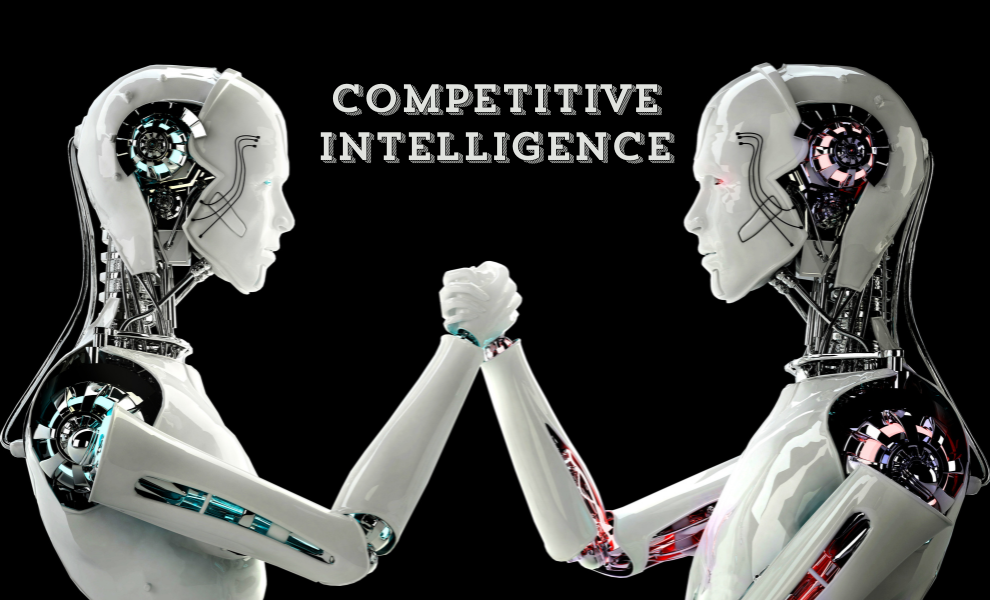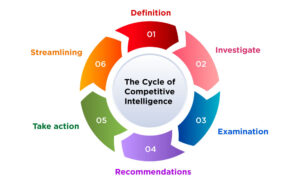To get a competitive advantage, businesses are substantially investing in market intelligence research as the competitive environment in almost every sector continues to grow. Data-driven competitive analysis or competitive intelligence is a term used to describe this continuous activity. We will define data-enabled competitive analysis in this article and explain lifecycle CI.
Competitive Intelligence: What is It?
Competitive intelligence may be characterized as a data-driven understanding of your target market’s competitive environment. As a result, it analyzes the current locations and plans of your rivals. Additionally, to properly place a product, product specialists must have this competence.
Data-enabled competitive analysis is often used to evaluate rivals’ offerings and positioning, identify competitors, and analyze market trends. However, this research and using market intelligence tools offer a significant chance to go ahead in a congested market.
Competitive Intelligence Types
Competitive analysis’ primary goals are to help businesses better understand their markets, make strategic choices with confidence, and boost return on investment. Different kinds of CI are used by enterprises for various reasons.
Activities related to data-enabled competitive analysis may be separated into two categories:
- Tactical (a brief procedure intended to aid in resolving problems like gaining market share or raising revenue).
- Strategic (addresses long-term problems, such as major risks and opportunities a business may encounter).
The Cycle of Competitive Intelligence
The competitive intelligence cycle is a closed loop consisting of six processes, according to Fouad Benyoub.
- Definition. The first step in data-driven competitive analysis is to identify the objectives, critical areas, and metrics for information gathering.
- Investigation. This is the stage of collecting intelligence. Competitive intelligence analysts employ technologies such as Talkwalker, Visualping, Owler, SimilarWeb, MOAT, SpyFu, and Crunchbase for competitor analysis at this point.
- Examination. Data is analyzed by competitive intelligence to provide information.
- Recommendations. In addition to providing facts, data-enabled competitive analysis offers suggestions.
- Take action. Out of all the competitive intelligence programs, this one has the highest success rate. Only when data-driven competitive analysis is put into practice can it help a company’s attempts to increase client retention, foster customer relationships, generate repeat e-commerce transactions, and establish brand loyalty.
- Streamlining. This is the area of any data-driven competitive analysis program that is most often ignored. The competitive intelligence analyst has to ask for and consider feedback to provide suggestions that are consistently of higher quality.
Businesses may identify and evaluate market trends that have an impact on their planned operations with the use of data-enabled competitive analysis. It gives them safe access to data on consumer expectations and rival technology advancements. Businesses may deploy resources to maximize their return on investment (ROI) in technology by using the tools provided to assess their strengths and shortcomings. Because they can anticipate their rivals’ upcoming moves, they can make wise commercial judgments.
Conclusion
Analyzing competitors’ tactics and identifying rivals is known as competitive analysis.
The objective is to get as much data as you can to comprehend the advantages and disadvantages of rivals and create a winning market entrance plan to obtain a competitive edge.
You may also like to Read:
Understanding the Concept of Artificial Emotional Intelligence
Are the allegations of AI Wiping out the entire work force true?
Artificial Intelligence Revolution: The Guide to Superintelligence



